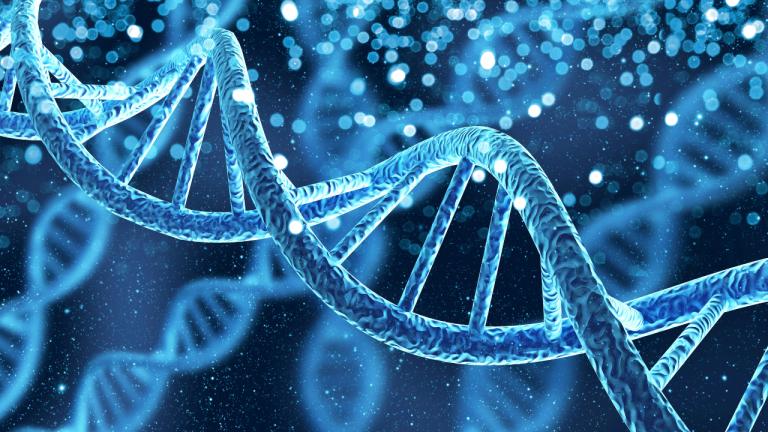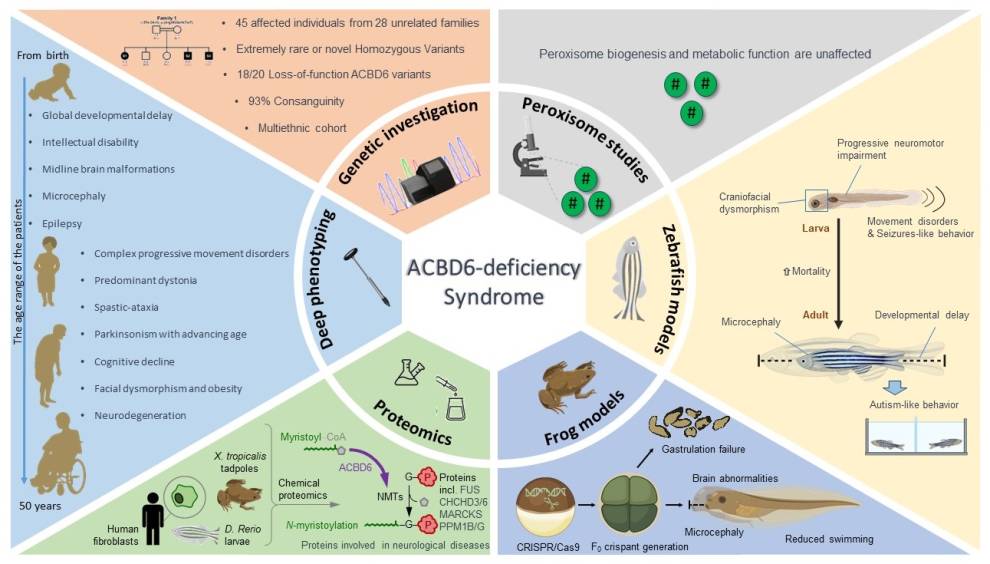New study reveals molecular causes of rare neurological condition in children
15 November 2023
A new study led by UCL Queen Square Institute of Neurology researchers has uncovered key molecular defects underlying a rare brain condition in children.

A new study led by Dr Reza Maroofian, Dr Rauan Kaiyrzhanov and Professor Henry Houlden (UCL Queen Square Institute of Neurology) has identified the molecular defects underlying a complex developmental brain condition in children.
The researchers investigated the role of a specific regulatory protein in the brain known as acyl-CoA-binding domain-containing protein 6, or ACBD6. Up until now, the implication of defects in this protein have been unknown.
This study, published in Brain Journal, uncovered the role of malfunctioning ACBD6 in an ultra-rare condition in children, known as Autosomal Recessive ACBD6-related disorder. This is characterised by delays in the development of cognitive and motor skills, and is associated with dystonia and parkinsonism.
This discovery was made possible through the use of advanced genomic technologies and extensive global data sharing, with 89 clinicians and scientists from 72 institutes involved worldwide.
The understanding of this rare disorder began with the study of a complex neurological disorder affecting three siblings from a single family, who had mutations in the ACBD6 gene. Thanks to extensive international collaboration over the following years, more affected families with similar genetic disorders were identified, and gradually a resemblance began to emerge among the distinct clinical and radiological features of those affected.
The researchers investigated 45 affected individuals from 28 unrelated families and extended their study to include animal models. This multifaceted approach uncovered evidence highlighting the essential role of ACBD6 in maintaining a healthy nervous system.
Co-lead author Dr Reza Maroofian said:
“This study underscores the untapped power of systematically investigating a relatively large number of well-defined individuals affected by ultra-rare disorders and highlights how much we can learn about human biology and pathology from these studies which are currently severely neglected and under-funded. This international endeavor stands as a testament to the relentless dedication and collective expertise of the global scientific community and highlights the critical importance of not marginalizing ultra-rare conditions.”
Co-lead author Dr Rauan Kaiyrzhanov said:
“The direct and immediate impact of this study is by introducing these genetic disorders to the medical community will help to diagnose the families affected by this condition worldwide. However, the long-term and wider effect of this study is that this ultra-rare condition which often manifests with abnormal movements such as dystonia and parkinsonism, can help us better understand the biology of these conditions in humans and advance our knowledge of biological mechanisms linked to much more common neurodegenerative movement disorders like Parkinson’s disease and dystonia.”
Co-author Dr Gaurav Varshney (Oklahoma Medical Research Foundation USA) said:
“The zebrafish model for ACBD6 exhibited the similar clinical symptoms as their human counterparts and also shed light on the disease pathways leading to the neurodevelopmental disorders. Our goal is to use zebrafish model to someday find a drug to slow down its progression before it reaches to the point of debilitation.”
Co-author Professor Matt Guile (University of Portsmouth) said:
"We are delighted to contribute to this important piece of new research which will help improve the lives of patients and their families. This is part of our wider work to discover how Xenopus tadpoles can be used to support the diagnosis of rare genetic diseases.”
Co-author Dr Wouter Kallemeijn (The Francis Crick Institute) said:
“We were responsible for studying the effect of ACBD6 deficiency on N-myristoylation, a specific type of protein modification. We were able to corroborate our patient findings in ACBD6-deficient frog and zebrafish models – which suffer from remarkably similar disease symptoms as human ACBD6-deficient patients – indicating ACBD6 plays a significant role in N-myristoylation, including that of proteins crucial for and during neurodevelopment.”

Links:
- Read the full study in Brain Journal
- Dr Reza Maroofian’s academic profile
- Dr Rauan Kaiyrzhanov’s academic profile
- Professor Henry Houlden’s academic profile
- UCL Queen Square Institute of Neurology
- Dr Gaurav Varshney
- Professor Matt Guile
- Dr Wouter Kallemeijn
 Close
Close

